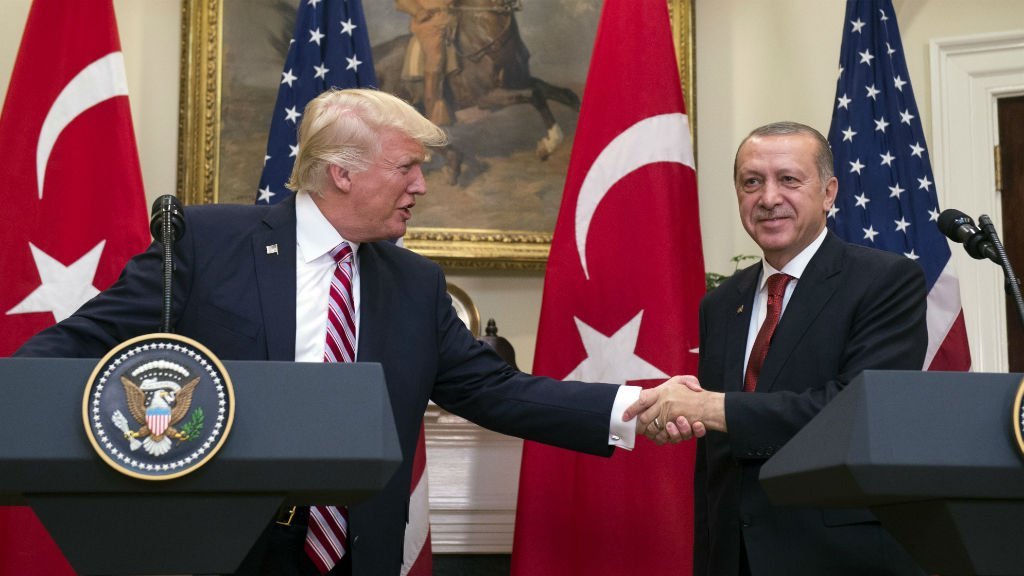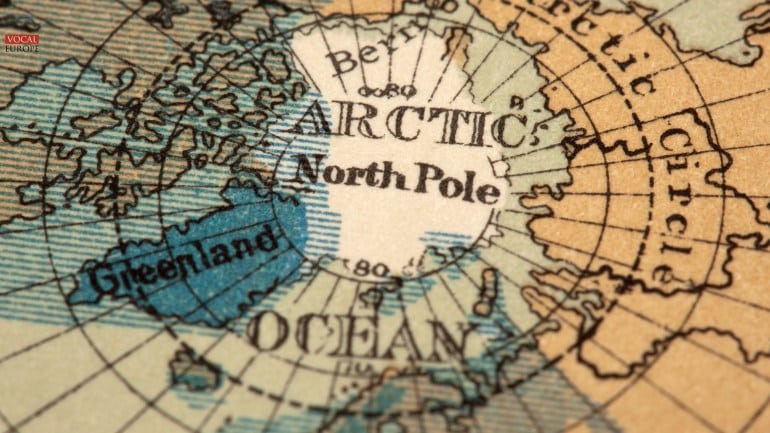
President Erdoğan’s march on the road map, very clearly defined by him for long, proceeds with no hurdles.
On Sunday, he was re-elected as party chairman after nearly 1000 days of absence, and, after gaining control in most of the state institutions, including the army, he is now a Commander-in-Chief with a party affiliation – unprecedented in modern Turkish history.
The march will now reach its climax, when he meets NATO and EU leaders in Brussels.
The world has been watching a rise, which can only be compared in 1930’s Europe. Yet, although the similarities are striking, the march has been met with much apathy, and a bewildering indifference. So much so that even when his body guards were involved in beating peaceful Kurdish demonstrators in Washington, there was not much of a reaction.
The much-anticipated meeting between US President Donald Trump and Turkish President Recep Tayyip Erdogan last week ended as it began, a mere blip.

Or so it seemed.
It was the Turkish president who raised expectations when he described the agenda by saying “our talks will no longer be about commas but with full stops.” The allusion was to the idea that, what he could not achieve with former US President Barack Obama, he would seek to conclude with his successor.
The meeting took no longer than 22 minutes but, even with a working lunch with the delegations added, there were question marks about full stops. Nothing of that sort emerged from the talks. Ankara is only left with an anticlimax.
In many ways, Erdogan went to Washington with a mission impossible: There was no way to make Trump revoke his decision, prompted resolutely by the Pentagon, to arm the Syrian Kurds. All he could do was grumble in a news conference about it, in subtly threatening terms.
At times Trump grinned nervously and many took it for granted that his mind was much more on the controversy of leaking sensitive intelligence to Russian Foreign Minister Sergei Lavrov than feeling sympathy for his Turkish counterpart. It appeared that the talks were rather devoid of meaning.
Erdogan was certainly aware how tightly squeezed he was. For months he had protested about the role of the Syrian Defence Forces (SDF) and the Kurdish People’s Protection Units (YPG) in the fight against the Islamic State (ISIS) and Trump’s decision had pre-empted much of Erdogan’s expectations.
On his way to Washington, Erdogan met with Russian President Vladimir Putin in Sochi and in Beijing. The Russian president inflicted even more wounds. As Erdogan stepped onto the plane heading for the United States, Putin said the Syrian Kurds had his country’s full support, no matter what.

It was clear that this double blow paralyzed Erdogan’s arguments and offers. This also showed how Turkey’s erratic policies in Syria helped somewhat align the regional policies of Moscow and Washington, specifically on the extermination of ISIS and other jihadist forces as the highest priority.
Erdogan knew perfectly well that the extradition of Fethullah Gulen, whom he blames for inciting the attempted coup in Turkey last July, from the United States was a half-hearted demand. He likely believes the cleric, his formidable foe, better remain in the United States for political reasons. The controversy will help Erdogan conduct as fierce a campaign in 2019 to cement his autocracy. Erdogan bets on the prospect that the process of extradition will take years.
The US federal court case of the Iranian-Turkish gold trader Reza Zarrab, which implicates Erdogan’s family and close circles in organised crime allegations in bypassing an Iranian embargo is really Erdogan’s main headache but even there he knows that he has enough time to try to have the case watered down.
There was debate among Turkey analysts, after Trump’s decision to prefer Kurdish militia to Turkish armed forces, about why Erdogan did not postpone his visit to the White House. Some argued that by doing so Ankara would have sent the message to the Americans that these Turks must have a reason to keep tensions high.
Erdogan, though, did not turn a hair. This explains why, after all, his visit was a success from his vantage point. This may also explain what he meant by “full stop.” Soon after his highly debated referendum victory, marked as “shady” in the official reports by the Organisation for Security and Co-operation in Europe (OSCE), Erdogan deliberately launched a global tour simply aimed at the legitimacy of the result. He went to Russia, India and China, meeting with top leaders.

Erdogan was emboldened by a congratulatory phone call from Trump the day after the vote and the visit to Washington was simply payback and a crowning moment that he, after all, was to be seen as a recognised leader to do business with. So, the photo-op in the White House was added to those from Russia, India and China.
If there is any dimension of success, this is it. All those analysts who claimed much ado about nothing may be missing a point: It was much ado about one thing — a continuity of a leadership, despite high criticism.
The tour for legitimacy will come — to use again the term of Erdogan’s — to its full stop when he reaches his final destination: To meet with leaders at the NATO summit as well as the top figures of the European Union. It will be all about mutually polite smiles, however false, and weak handshakes, frozen in snapshots.
For the moment, Erdogan seems satisfied. When it comes to Turkey and its interests, well, that’s an entirely different story.


